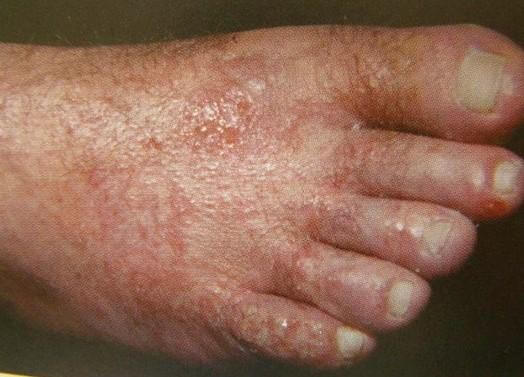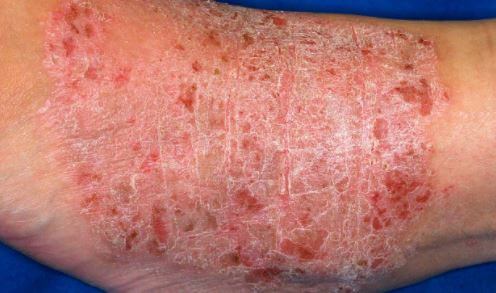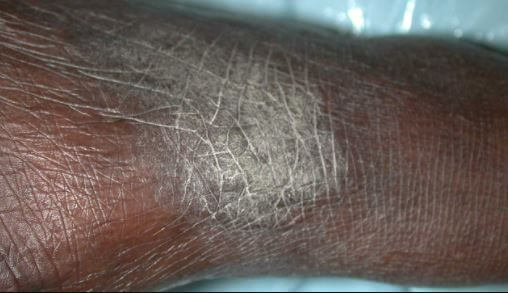What is Lichenification?
Lichenification is where your skin becomes leathery and thick due to scratching or rubbing of the outer layer of the skin. Lichenification is not a life- threatening condition but it may be painful. This condition affects people of all ages and gender but is more common in women. This condition is not permanent and it can last as long as you continue rubbing your skin1, 2, 3.

Causes
Studies have highlighted various factors that cause lichenification and they include1, 4, 5:
Rubbing of the skin
Lichenification is normally as a result of rubbing. When you regularly scratch your skin, you damage the outer layer of your skin leading to intense irritation and thickening of the skin. As you continue scratching your skin, you worsen the condition even more.
Weak immune system
Our immune system is responsible for protecting us against infections. Due to some other factors, your immune system may become weak and a result unable to defend you against infections. As a result your body is more vulnerable to any infections including lichenification.
Psychological factors
Emotions may also contribute to lichenification according to some researchers. It is believed that people who are depressed or stressed are more likely to develop lichenification.
Neurodermatitis
Some researchers believe that neurological factors also promote lichenification. With neurological factors, nerves that transmit signals to the brain become overactive and send itching signals to the brain. When this occurs, it may initiate lichenification process.
Medical conditions
There several skin disorders that may cause lichenification. They include:
Eczema
It refers to a cluster of medical conditions that cause the skin to become irritated or inflamed. The most common form of eczema is atopic eczema. Atopic is a collection of several diseases that are inherited and have a tendency to develop allergic conditions such as hay fever and asthma.4
The real causes of eczema have not been identified yet. However, studies have documented some of the causes such as a person’s immune system may react to an irritant and cause the skin to become irritated or inflamed. Another factor highlighted is that eczema is more common in people who have a history of allergies and asthma.
Psoriasis
It is a skin condition marked by skin cells that grow faster than normal. When these cells reach the skin surface, they die and form plaques on the skin which are covered with scales.
Psoriasis occurs on your scalp, elbow, and knees and can affect your palm and soles of the feet. There are many types of psoriasis which you can get as an individual such as erythrodermic psoriasis, guttate psoriasis, pustular psoriasis, etc.5
This condition can be caused by numerous factors such as
Abnormality in your immune system may affect the body’s defense mechanism and make you prone to infection including psoriasis.
Trauma and emotional stress can also contribute to psoriasis. Studies have revealed that many people exhibited worsened symptoms of psoriasis when they had lost a job or their loved ones. In addition doctors believe that triggers of emotional stress may also affect your immune system function and as a result make you susceptible to infections.
The use of particular drugs can also promote psoriasis. These medications are believed to cause this condition: beta blockers, ibuprofen, etc. Other factors that can cause psoriasis include it may be passed from an infected parent to a child.
Other medical conditions that can promote lichenification include:
- Lichen planus
- Fungal infections or
- Insect bites.
Symptoms
There are several symptoms associated with lichenification and they vary from one person to another. The following are some of the symptoms of this condition3:
Patients have dry and itchy patches on the skin which may be accompanied with scales. These patches may be red or darker than the nearby skin, a condition called hyperpigmentation. The area where the plagues occur is normally thick and leathery; the plagues can be linear or circular in shape. The plaques also form on areas of your body which are easily scratched such as neck, limbs, around the anus, scalp and trunk.
Diagnosis
Lichenification can be diagnosed through the following methods2:
- Physical exam. Usually lichenification can be diagnosed through a simple physical exam. Your doctor simply examines the affected skin to understand the condition.
- In case the doctor has not identified the cause of this condition through physical examination, several tests can be conducted such as
- Biopsy: Your doctor extracts a sample of the affected skin and takes it to the laboratory for pathological tests. Biopsy is also vital since it will help your doctor rule out other similar skin conditions.
- Imaging tests: if your doctor suspects neurological problems, several imaging tests such as MRI scan, X-ray may be performed to find out the problem. Your doctor may conduct an MRI scan on your spine to check for any the problem.
- Nerve conduction tests can also be done to determine if the nerves are working properly or not. Imaging tests are rarely used.
Treatment
Successful management and treatment of lichenification depend on treating the underlying condition properly. There are several treatment options that may be used to treat this condition:
Tropical therapy
There are some tropical medications that your doctor may suggest to ease inflammation which is the cause of lichenification. They include topical corticosteroid creams or triamcinolone. You have to apply on the affected area on your skin as per your doctor’s instruction.
Alternatively, your doctor may also give a surgical tape which has corticosteroid to apply on the affected area in the morning and remove it in the evening.
Injections
You doctor will inject medications directly on the affected area to help treat the condition.
Emollients
Your will also be given emollients which you will apply on the affected area to moisturize it.
Antifungal cream
Your doctor will prescribe antifungal cream to be applied on the affected area to treat fungal infections.
Other medications that can be used to treat underlying conditions that cause lichenification include:
- Cyclosporine is used to control the immune system and prevent if from overreacting to irritants.
- Valproate , which is an anti-epileptic medication can be use to cure neurological issues of the skin.
Apart from medications, there are some measures you can take to manage lichenification such as:
- Avoid scratching the affected area and cover the area with a clean cloth.
- Learn how to manage your stress because it is a cause of this condition.
- Apply wet compressors on the affected area to ease inflammation.
Lichenification is not a life-threatening condition but can prevent you from a enjoying a fulfilled life. Seek medical attention if you notice the following:
- You experience severe itching which does not go way after treatment.
- You notice that the symptoms are becoming worse; there is swellings, redness and pain in the affected area.
Pictures


Reference List
- Lichenification http://health-benefits-of.net/lichenification-definition-treatment
- https://medlineplus.gov/ency/article/003251.htm
- Lichenification – http://healthool.com/lichenification/
- Eczema http://www.webmd.com/skin-problems-and-treatments/guide/atopic-dermatitis-eczema
- Psoriasis – http://www.webmd.com/skin-problems-and-treatments/psoriasis/understanding-psoriasis-basics
